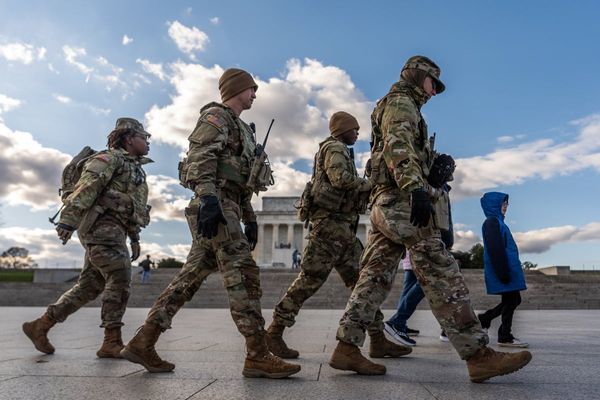It happened nearly 20 years ago, but Chicago cyclist Anne Alt still has vivid memories of a bike ride home during evening rush hour.
As she tried to go around a parked vehicle obstructing the crosswalk at Clark Street and Broadway, a door swung open.
“One second, I’m going straight on Broadway,” Alt said. “The next second, I’m flying sideways off my bike and landing in the middle of a traffic lane.”
Alt remembers being in shock, unaware her tailbone was fractured.
“I was incredibly lucky because the woman behind me slammed on her brakes, put on her flashers, jumps out of the car, [asks], ‘Are you OK?’ ” Alt said. “I’m eternally grateful to that driver behind me who stopped because she literally saved my life.”
Alt, who’s now president of the Chicago Cycling Club, said bike safety in Chicago has only gotten worse since then.
“Chicago did very little during the pandemic,” she said. “We lost a lot of ground compared to a lot of other cities that acted more aggressively to make their streets safer.”
With crashes involving cyclists on the rise, bike safety advocates want City Hall to speed proposed plans to upgrade cycling infrastructure.
“I’m glad that they’re experimenting with more types of bike lanes to see what works and what doesn’t,” Alt said. “But I do feel like it’s going slowly.”
More crashes
There were 1,186 traffic crashes involving cyclists this year through Aug. 26 — nearly 30% more than during the same period in 2020.
Chicago was ranked 161 of 163 large cities for bike safety this year by PeopleForBikes, a nonprofit based in Colorado. It ranked more than 1,700 cities in the United States and internationally on the quality of their bike networks, rating cities on a scale of 0 to 100. A score of 0 to 20 indicates a city lacks safe bikeways or has gaps in its network. A score of 80 to 100,indicates that most common destinations are accessible by safe, comfortable bike routes.
Chicago had a rating of 7. The average rating for all cities was 27.
Rebecca Davies, who oversaw the ratings for PeopleForBikes, said there are a lot of beneficial changes when protected bike lanes are added.
“We see higher ridership because more people feel comfortable riding a bike when they know that they have this separated space, especially on those busier, higher-speed streets and higher-volume streets as well,” Davies said.
She said protected bike lanes also helps people driving: “Everyone knows where they’re supposed to be. When you don’t have dedicated spaces for people traveling at different speeds, it gets very confusing for people.”
Davies said Chicago’s rating could improve significantly if the city prioritizes reducing speed limits on bigger roads.
“Maybe a difference of five or even 10 miles per hour might not sound like a lot to someone, but, when you look at the data, it makes a significant difference in the likelihood of injuries and fatalities,” she said.
A 2020 report by the National Association of City Transportation Officials found that, as speed limits and speeds increase, so do fatalities. It found that someone hit by a car going 35 miles an hour is five times more likely to die than a person hit by a car going 20 miles an hour.
A 2019 study by researchers at the University of Colorado Denver and the University of New Mexico found that, with added bike infrastructure, the number of fatal crash rates in Chicago dropped by 38%. Specifically protected and separated bike lanes are significantly associated with fewer fatalities and improved safety.
Reducing speeds is a focus in expanding and updating Chicago’s bike network, according to David Smith, the city of Chicago Department of Transportation’s “complete streets” director. Smith said studies have shown the number of people driving over the 30 mph limit on stretches of Augusta Boulevard and Kedzie Avenue went down after protected bike lanes were installed.
Smith said the city plans to narrow travel lanes to reduce driving speeds and repurpose space to better accommodate pedestrians, cyclists and transit users.
“The faster that somebody is driving, the more likely that someone who is particularly outside of a vehicle is likely to get seriously injured or killed,” he said.

Advocates cite slow progress
In March, CDOT released its 2023 “Chicago Cycling Strategy,” outlining plans to install the next 150 miles of new and upgraded cycling infrastructure over the next couple of years. Eighty-five percent of the projects call for protected bike lanes and neighborhood greenways that are comfortable for people of all ages and abilities and not just for experienced cyclists.
“We know that both protected bike lanes and neighborhood greenways offer a level of comfort that really is suitable for a wide range of people,” Smith said. “We’re designing our streets to be friendly for people of all ages and all abilities and really to develop a system where anyone can get around by bike.”
The strategy acknowledges that Chicago’s bike network isn’t evenly distributed across the city. There are plans to begin a new “Neighborhood Bike Network” planning and engagement process in Brighton Park, Gage Park and McKinley Park.
According to a WBEZ analysis of Chicago’s bike network growth, the Archer Heights, Garfield Ridge, Montclare, Mount Greenwood and O’Hare community areas generally lack bike infrastructure.
The strategy calls for expanding the downtown protected bike lane network this year. Protected bike lanes also are planned for key corridors along Belmont, Damen, Kedzie and Milwaukee avenues and Clark, Division and Halsted streets.
City Hall also plans to upgrade all existing protected bike lanes with concrete curbs and to convert existing buffered bike lanes to protected bike lanes. CDOT finalized designs for protected bike lanes on Kedzie Avenue, Augusta Boulevard and Milwaukee Avenue last year and will continue upgrading more routes in 2023.
Some advocates are skeptical about the city’s plans, pointing to slow progress on previous plans, with some goals unmet. In 1992, the city released “The Bike 2000 Plan,” which recommended the city develop at least 300 miles of bikeways by 2000. By 2010, the city had 193.2 miles.
The “2020 Streets for Cycling Plan” called for 645 miles of bike infrastructure over the coming years. As of June, Chicago’s bike network had about 433 miles of on-street bikeways and off-street trails and 40 miles of protected bike lanes — 9% of the city’s total.
“We are not making progress,” said Rony Islam, an organizer with Chicago, Bike Grid Now!
Islam’s group wants city officials to transform 10% of Chicago’s streets — at least 450 miles — into a bike grid, to lower the speed limit to 10 miles an hour in some residential areas and take other traffic-”calming” measures such as installing more speed humps, raised crosswalks, curb extensions and chicanes and narrowing more roads.







